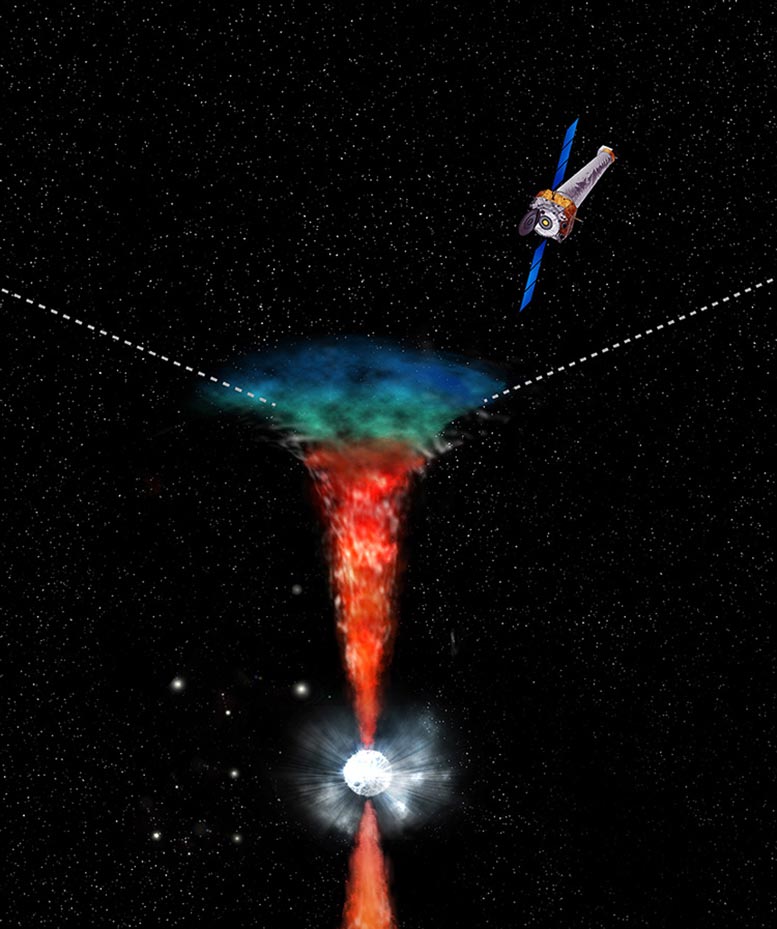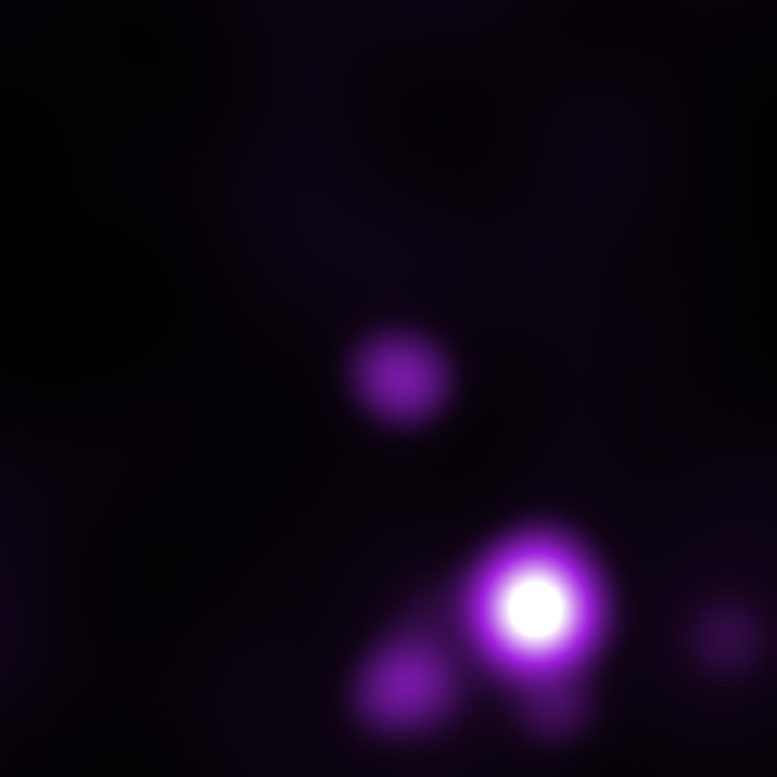In this artist’s representation, the merger of two neutron stars to form a black hole (hidden within bright bulge at center of image) generated opposing, high-energy jets of particles (blue) that heated up material around the stars, making it emit X-rays (reddish clouds). The Chandra X-ray Observatory is still detecting X-rays from the event today. They could be produced by a shock wave in the material around the black hole, or by material falling violently into the black hole (yellowish disk around central bulge). Credit: X-ray data from NASA, CXC and Northwestern Univ./A. Hajela; visual by NASA/CXC/M. Weiss
Excess X-ray emissions from remnant four years after merger hint at bounce from delayed collapse.
When two neutron stars spiral into one another and merge to form a
X-ray sources captured by Chandra, including, at top, the black hole that formed from the merger of two neutron stars and was first observed in 2017. Credit: NASA, CXC and Northwestern Univ./A. Hajela
Chandra, too, pivoted to observe GW170817, but saw no X-rays until nine days later, suggesting that the merger also produced a narrow jet of material that, upon colliding with the material around the neutron stars, emitted a cone of X-rays that initially missed Earth. Only later did the head of the jet expand and begin emitting X-rays in a broader jet visible from Earth.
The X-ray emissions from the jet increased for 160 days after the merger, after which they steadily grew fainter as the jet slowed down and expanded. But Hajela and her team noticed that from March 2020 — about 900 days after the merger — until the end of 2020, the decline stopped, and the X-ray emissions remained approximately constant in brightness.
“The fact that the X-rays stopped fading quickly was our best evidence yet that something in addition to a jet is being detected in X-rays in this source,” Margutti said. “A completely different source of X-rays appears to be needed to explain what we’re seeing.”
The researchers suggest that the excess X-rays are produced by a shock wave distinct from the jets produced by the merger. This shock was a result of the delayed collapse of the merged neutron stars, likely because its rapid spin very briefly counteracted the gravitational collapse. By sticking around for an extra second, the material around the neutron stars got an extra bounce that produced a very fast tail of kilonova ejecta that created the shock.
“We think the kilonova afterglow emission is produced by shocked material in the circumbinary medium,” Margutti said. “It is material that was in the environment of the two neutron stars that was shocked and heated up by the fastest edge of the kilonova ejecta, which is driving the shock wave.”

The merger of two neutron stars produced a black hole (center, white) and a burst of gamma-rays generated by a narrow jet or beam of high-energy particles, depicted in red. Initially, the jet was narrow and undetectable by Chandra, but as time passed the material in the jet slowed down and widened (blue) as it slammed into surrounding material, causing the X-ray emission to rise as the jet came into direct view by Chandra. This jet and its oppositely directed counterpart were likely generated by material falling onto the black hole after it formed. Credit: NASA/CXC/K. DiVona
The radiation is reaching us only now because it took time for the heavy kilonova ejecta to be decelerated in the low-density environment and for the kinetic energy of the ejecta to be converted into heat by shocks, she said. This is the same process that produces radio and X-rays for the jet, but because the jet is much, much lighter, it is immediately decelerated by the environment and shines in the X-ray and radio from the very earliest times.
An alternative explanation, the researchers note, is that the X-rays come from material falling towards the black hole that formed after the neutron stars merged.
“This would either be the first time we’ve seen a kilonova afterglow or the first time we’ve seen material falling onto a black hole after a (function(d, s, id){
var js, fjs = d.getElementsByTagName(s)[0];
if (d.getElementById(id)) return;
js = d.createElement(s); js.id = id;
js.src = "https://connect.facebook.net/en_US/sdk.js#xfbml=1&version=v2.6";
fjs.parentNode.insertBefore(js, fjs);
}(document, 'script', 'facebook-jssdk'));
Read original article here
